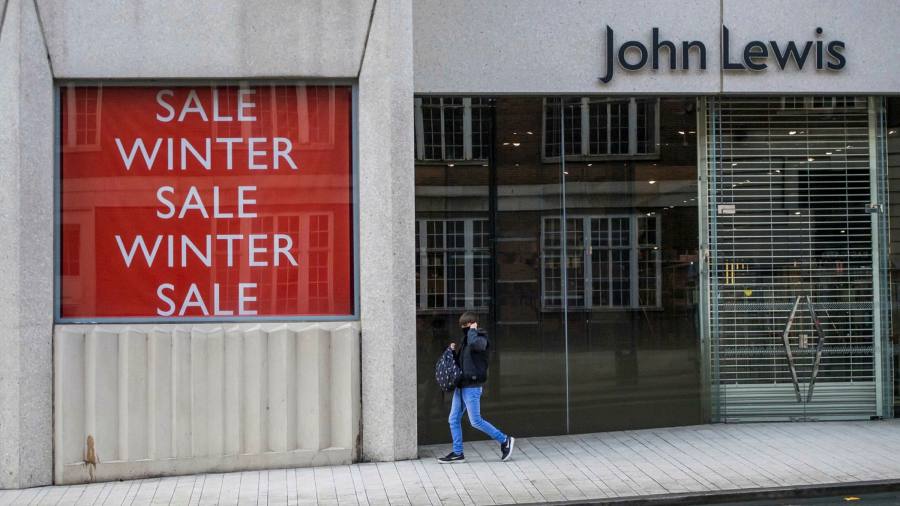[ad_1]
The headline was “death of the high street as big shops leave townâ€. The year was 1994. And the story was among the first of a kind that has been rerun in UK papers and news bulletins with alarming regularity ever since.
Back then, coincidentally the year that a bookseller called Amazon got started, the problem was a socking great recession and the rise of out-of-town retail parks.
Now it’s online shopping and a great, big pandemic. But for British obsessives of high street decline, there will be plenty more to come. Despite the build-up, this retail reckoning is only just beginning.
One of the peculiarities of UK retail is that as the internet has captured a bigger share of spending, the physical sector has continued to expand.
Retail floor space in England and Wales rose by about 10 per cent from 2000 to 2018, according to Lambert Smith Hampton. It continued rising after the arrival of the smartphone in 2008, which supercharged online shopping: internet spending as a proportion of total retail spend rose from 4.9 per cent in 2008 to nearly 18 per cent in 2018.
It continued increasing, even as logistics and warehousing space expanded from 2015 to cater to the internet opportunity. Decrepit space wasn’t converted as shiny new shops were built. But household retail names also expanded in the face of the online threat.
John Lewis, which last week reported the first loss in its history, had 26 stores and 3.5m square feet of selling space in its fiscal year to January 2008. By 2016, the last year it disclosed the figures, it had grown 40 per cent in terms of physical space, to 4.9m square feet across 46 stores.Â
It went into the pandemic larger still, with 50 stores, eight of which closed last year with another eight now under threat.
During this period, its online business grew from about 10 per cent of sales in 2008, to 33 per cent in 2016, and to 40 per cent on the eve of the pandemic.
Other retailers did much the same. The “multichannel model†held that customers spent more with their favoured retailers across stores and online, rather than just switching from one channel to another. The “halo effect†of a new store was online sales growth.
In fact, John Lewis last week gave this statistic: pre-Covid, the business assumed that £6 in every £10 spent online was “driven by†the shops. Now that has fallen to £3.
Before 2019, and a change of methodology, the credit the shops got for online sales was even higher. That underpinned the value of the John Lewis real estate (where it announced a huge writedown last week). It also helped justify physical expansion.
Never mind the fact that the amount in online sales that John Lewis attributed to its stores seemed, until very recently, extraordinarily high.Â
Its message now is not just that we are shopping more online (which with shops closed is self-evident). It is that we are shopping differently — less brand driven, perhaps, more price driven and more independent of physical display space. Assumptions of the multichannel model have broken down, accelerated by Covid-19.
John Lewis is betting that behavioural change is here to stay. Others argue they are overreacting, and that physical retail will make a comeback.Â
Financial constraints mean some, like John Lewis, will need closures to free up investment funds to give other stores a fighting chance. Others might take a Next-like approach, with a flexible store portfolio where rents and locations are aggressively managed to justify its existence. Many will close stores all together.
A nation of shopkeepers, which went into the pandemic with an estimated 25-30 per cent surplus of retail space, faces a hugely painful adjustment, not just to events of 2020 but in catching up with all the changes in retail since 2008.
[ad_2]
Source link






